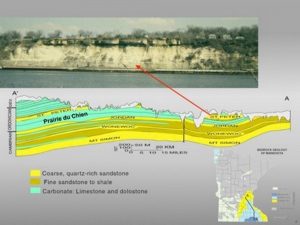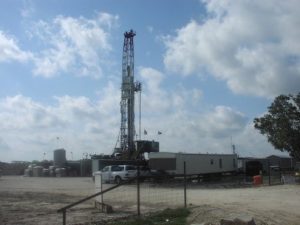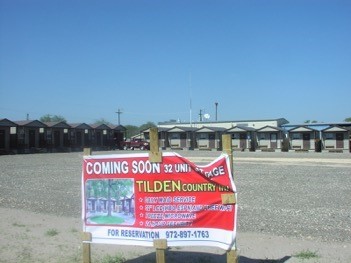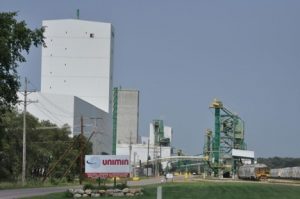6 The Stone That Turns to Sand
Geological Origin of the Jordan Sandstone
There is another rock resource on the Kasota Prairie which is as equally valuable as its limestone. But this one hardly looks like a rock at all. It is a sandstone that can crumble in your hand. It is the Jordan Sandstone that is found in southern Minnesota. In Runkel’s[1] illustration ( see Fig. 10 ), the Jordan Sandstone is part of a complex of sedimentary rocks, consisting of the Jordan, St. Peter, Wonewoc, and Mt. Simon layers.

My research has shown however, that the illustration’s rather straight-forward layering is not true in the field. The sequential occurrence of these sandstones, the thickness of their beds, and the quality of the rock is a complicated geologic feature to understand. These formations have risen, sank, or folded into each other over millions of years, producing rock formations at different depths, different thickness, and different qualities in different areas. However, on the Kasota Prairie the Jordan sandstone lies generally below the limestone.
In composition, the Jordan sandstone consists of 99% quartz or silica; hence, the name that is often applied to it, is “silica sand.” It has been characterized as having high strength, chemically inert, spherical in form and, compared to “common” sand, has larger grains.[2] I have looked at the Jordan sandstone grains under a microscope and can confirm that indeed they are mostly round and of uniform size. These characteristics make it a high-quality sand to use in oil and gas mining, as compared to the more irregular size grains of so-called “common” sand. Today, the Jordan sandstone and other sandstones are riding a wave of unprecedented demand for use in an innovative oil and natural gas mining method called fracing or fracking. Fracking has become in the last twenty years the major way to extract oil and natural gas from shale rock. To understand why this is the case, one must know a bit about this method of mining.
Fracking
Fracking is the process whereby a solution of water, chemicals, and silica sand are forced into shale formations which contain oil and/or natural gas. There are a number of steps involved in this mining method as described in the ProPublica web site.[3] First, large quantities of water and silica sand with added chemicals are trucked to the mining site and combined. Next “pumpers” inject the solution under high pressure into the rock formation. The solution breaks up or “fractures” the rock formation; hence, its name. The natural round, uniform shape and size of the silica sand grains does not clog the wells, but rather moves like a liquid through them. The silica sand also helps keep these fractures open so that the natural gas or oil can flow through the shale deposit into an oil well. The sand is also often called a “proppant,” as it refers to “propping open” the fractured shale. The oil or natural gas then flows out of the well into pipelines. Finally, a recovery of the waste water solution is undertaken.
Eagle Ford Play
A few years ago, to learn first-hand about this type of mining, I joined a field trip to view fracking operations at the Eagle Ford Shale Play[4] in southeast Texas. This field trip was part of the annual meeting program of the the National Council for Geographic Education held at the University of Texas at San Marcos, Texas. The Eagle Ford covers a wide area, dipping toward the Gulf of Mexico and varies in depth from 4,000 to 14,000 feet. Professor Donald Huber, in his Field Trip Guide[5] explained the process of fracking. Before the actual mining begins, a so-called staging platform is constructed which contains tanks for chemical storage, sand storage units, water tanker trucks, data vans, and the drilling rig itself. A road to the platform also must be constructed, security fences put up, gates installed and holding ponds dug and lined for waste water. Once this is all completed, drilling or “makin’ a hole” in Texas mining parlance, can begin. The drilling rig is a mobile unit that is assembled at each well site. It will drill here for about a week then move on to another platform. Given the gas and oil boom of the last decade, over 3,100 well permits were issued in the Eagle Ford Shale play to 2012.[6] The result is a southeast Texas landscape that is dotted with hundreds of oil rigs and gas wells (see Fig. 11). A typical gas/oil rig consists of a derrick, water tanks, and temporary housing. Roads are constructed to the drilling site and for security, a fence is erected. This platform will remain in place until the oil/gas “plays out” and then is moved to a new site.

Oil and Gas Benefits
The economic benefits to local communities and individuals in the Eagle Ford Shale Play is difficult to comprehend. Over 47,000 jobs have been added to local communities since the boom began.[7] Workers are needed as drillers, derrick hands, roughnecks, mud engineers, road construction crews, pipe line contractors, supply delivery personnel, security guards, and the most needed: water, oil, gas, and sand truck drivers. The increased work force has created a huge demand for housing. Small town hotel and motel occupancies have risen, along with their rates. Parks have been set up to accommodate RVs and pickup campers. So-called “man camps” with new cabin-like houses have sprung up, offering daily maid service, 32 inch TVs with SAP, freezers and microwaves, with 24-hour security (see Fig. 12).

And the economic benefits extend beyond the local oil/gas rich communities. According to Texas law, school districts reaping oil and gas dollars must share these revenues with poor school districts in the state. This is the so-called Robin Hood Plan.[8] For example, Cotulla, Texas, a small town in the Eagle Ford Shale Play, remitted 1 million dollars to other school districts in 2011. In 2012, it rose to 15 million.
Finally, let me relate a story about a 90 year old woman living in the little town of
Luling, Texas. She had recently sold the oil and gas rights on her cattle ranch on the Eagle Ford Play. She went into the local bank to cash her first monthly dividend check. The teller explained to her that the bank did not have enough money on hand that day to cash her check. She exclaimed, “Well, I don’t see why not? It’s only for $1,500.” The tellerreplied, “Ma am, look at that check again; it’s for $15,000.”[9] That this kind of money is being made in the Eagle Ford is an understatement. However, such riches are not without its problems as well.
“Not What It’s Fracked Up To Be”
There are a host of problems and concerns with fracking. Increased truck use backs up traffic at stop lights and rail crossings. There is concern about methane leakage at gas wells. Speculation is rampant that due to the high pressure used to break up the shale, thousands of small earthquakes occur. But the big problems concern water use, recovery and pollution. A massive amount of water is needed for fracking. In an area like Southeast Texas where surface water is at a premium, most water has to come from underground resources. This raises the question of “whose water is it” and “who should profit by its use”? Another concern is that waste water that comes from the drilling site is supposed to be captured and stored in lined pits to prevent groundwater pollution. Often, it is not.
There is an additional problem that occurs hundreds of miles away from the oil/gas wells on the Eagle Ford. As was discussed earlier, a key ingredient for fracking is silica sand. Given the great demand for cheaper oil and natural gas produced by fracking, the silica sands in Minnesota and Wisconsin can’t be mined and shipped out fast enough. One of the major suppliers of this sand is the Jordan sandstone on the Kasota Prairie.
The Unimin Corporation has been mining this sand for over 30 years, primarily being used to free or un-clog oil wells. According to Jeff Jurewicz,[10] the company was started by Bill Woods in 1970 as a small mining operation in Pennsylvania, primarily supplying sand for sand blowing [blasting?] companies. It now has mining sites in 20 states and Mexico and Canada. They own or manage over 100,000 acres and have over 2,400 employees. It is the world’s leading producer of silica sand and a major producer of resin coated sand proppants. It is also the largest producer of low-iron nepheline syenite for glass, ceramics, paint, and plastic uses as well as the world’s leading producer of high quality quartz.[11]

The size of the Unimin sand processing and shipping facilities can be seen on the accompanying photograph (see Fig.13 ). It shows a complex of buildings for cleaning and washing the sand, offices, parking for trucks, railroad spurs for sand cars, and sand storage containers. Nearby, are the active quarries and reservoirs where waste water that had been used to clean the sand has been pumped. All of this is needed for the mining of the Jordan sandstone. And, as we shall see, Unimin has greatly expanded its mining operations.
Mining the Sandstone
Similar to the limestone deposits which are only a few miles away, the Jordan sandstone formation lies quite near the surface. This makes it accessible to open pit mining methods and thus economical to extract. However, the mining of the sandstone is considerably different than the mining of limestone.
First, cores are made into the ground to test the depth and quality of the sandstone at a particular location. These test cores are made by an auger-like drilling device which brings the core to the surface for testing. If a mining site is suitable, all vegetation must be cleared. Then, the overburden of loose limestone and soil is removed by bulldozers This overburden can vary from five to ten feet in depth.It is pushed to the side of the site and will later be used as fill to create a berm around the mining pit or, in some cases, also used for mine reclamation. Once the sandstone is exposed, it can be “broken up” by blasting. A small explosive can be inserted into the formation and detonated, It is then a simple matter of front-end loaders to begin scooping up the sandstone from the pit (see Fig. 14), which is now in the form of chunks, and loading it onto trucks or onto what resembles a huge conveyor belt. These chunks are then conveyed to the crusher plant which breaks them up into smaller pieces. The sand is then cleaned with water to remove any unwanted silt and clay particles. These particles make up about 25% of the sandstone that is initially mined. An important next step, involves the drying and sorting of the sand to fit the requirements of fracking. Non-fracking sand can be sold as industrial sand, such as for road construction or stored for possible reclamation. The final step is to load the sand onto rail cars.

From the railroad adjacent to the plant, the silica sand is then shipped to oil and gas mining locations. Most of the sand from the Kasota Unimin plant is destined for the oil shale deposits in Texas, such as the Eagle Ford, and to the oil shales in North Dakota. To meet the demand for its sand Unimin acquired the load cars of the Winchester and Western Rail Company. John Brotten, an engineer for Unimin,[12] told me to be on the look out for Winchester and Western sand cars when I was on my Texas fracking field trip. Sure enough, our second stop was a sand unloading and storage facility. There were so many Winchester and Western sand cars there that I couldn’t count them all. To me, this illustrated that, although the oil and gas fields of Texas and the Kasota Prairie sand are geographically widely separated, they are closely tied to each other economically. Both industries need each other and together are making many formerly unattainable oil and gas deposits feasible to mine. And in the process, making lots of money.
However, like the problems involved in fracking, the mining of silica sand carries its own sets of concerns. How these concerns have raised conflict on the Kasota Prairie will be the subject of the next chapter.
- Tony Runkel, Southeastern Minnesota Silica Sand Geologic and Landscape Context. Minnesota Geological Survey, University of Minnesota, n.d., p.2. ↵
- Ibid., p.1. ↵
- "Fracking: Gas Drilling's Environmental Threat" ProPublica, https://www.propublica.org/series/fracking. ↵
- A “Play” is mining term for a shale formation that contains significant amounts of natural gas. ↵
- Donald J. Huebner, The Eagle Ford Shale Play Field Trip Guide and Educator Resource. Department of Geography, Texas State University-San Marcos. 2012. ↵
- Ibid, p.5. ↵
- Ibid., p.19. ↵
- .Ibid, p.19. ↵
- Ibid., p. 6. ↵
- Jeff Jurewicz, Lecture at the Department of Geography, Gustavus Adolphus College, St. Peter, Mn., January 18, 2013. ↵
- "Unimin," Wikipedia, https://en.wikipedia.org/wiki/Unimin. ↵
- John Brotten Interview at Unimin Corporation office in Kasota, Minnesota, July, 2012. ↵
